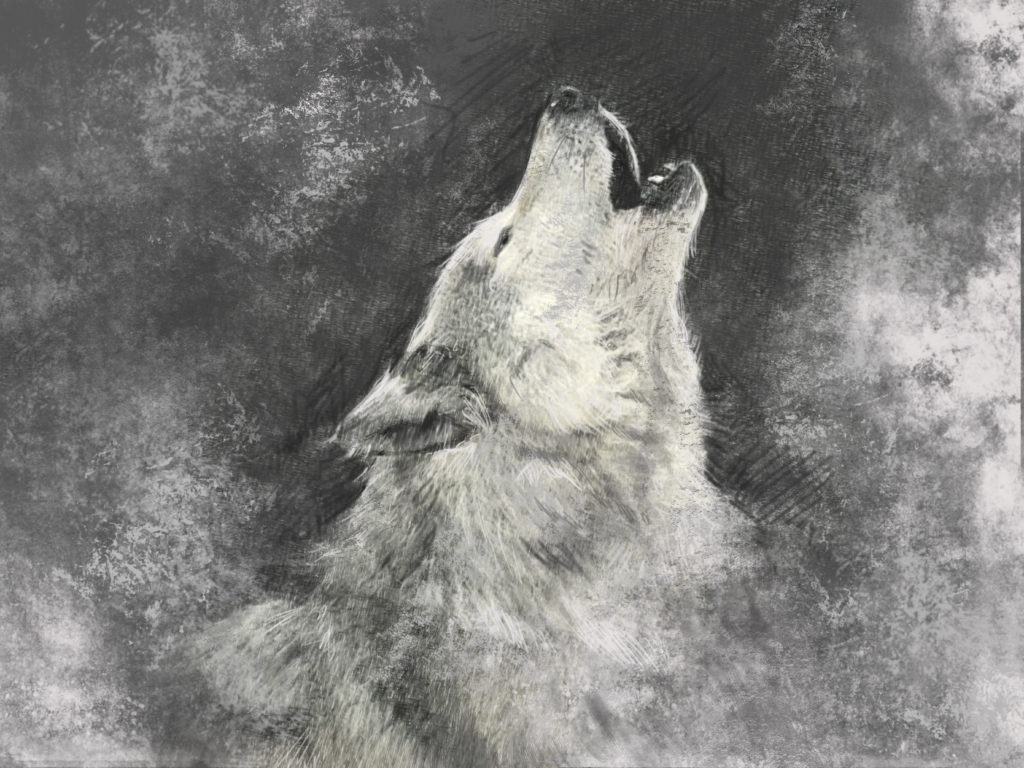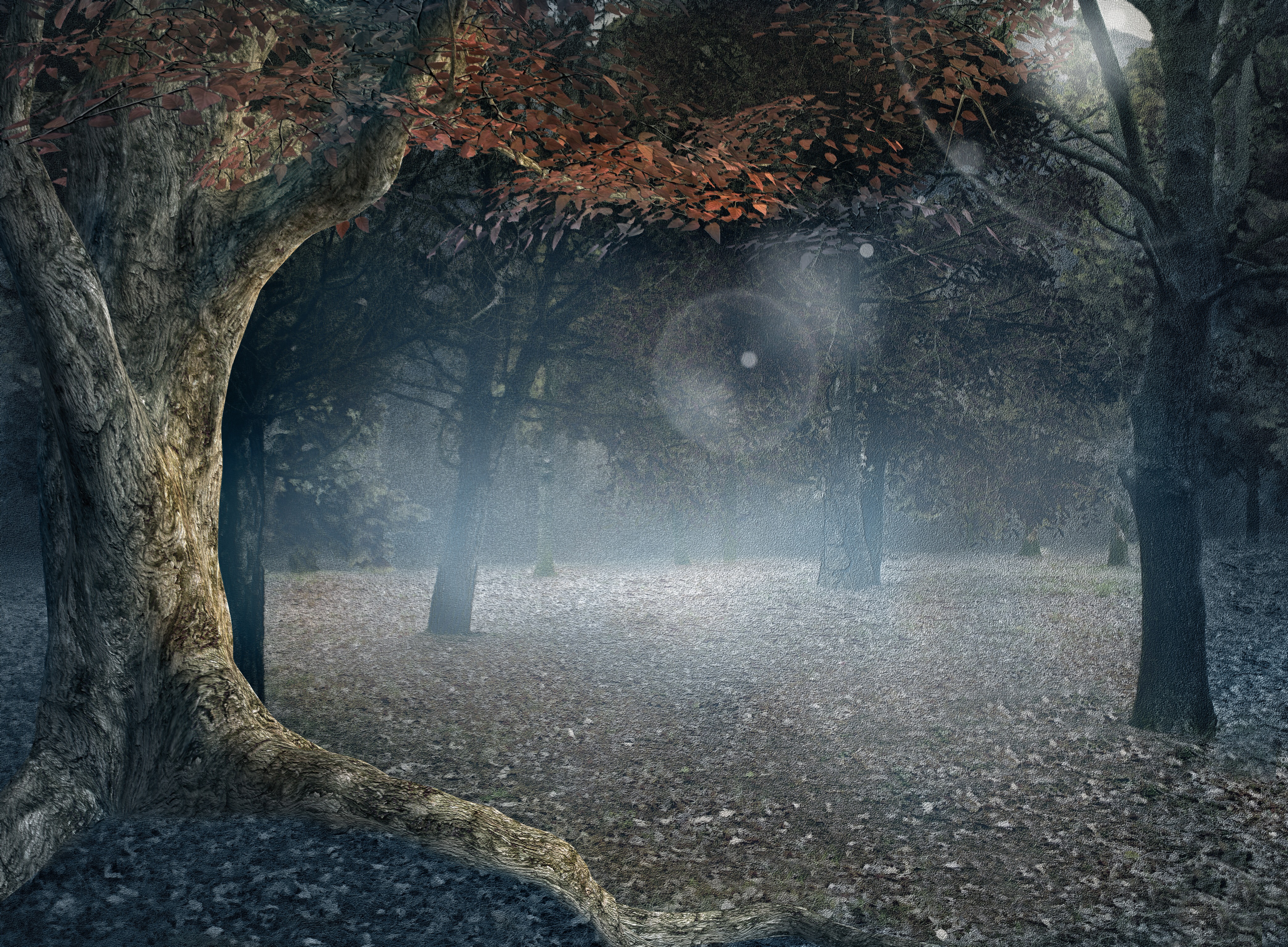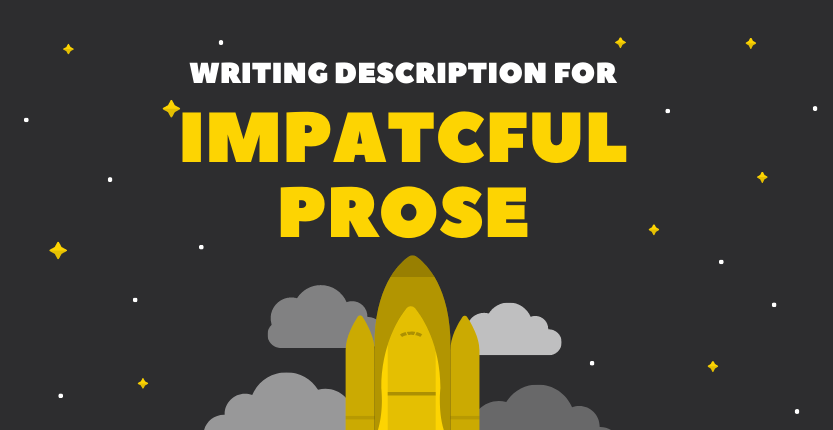Writing is a juggling act, trying and sometimes failing, to keep all your pieces in seamless rotation. Description is just one of the many cogs that need to continue turning in order to make your story impactful for readers. When writing description, you have to first know what it is you want your readers to visualize and experience. Once you know this, you can manipulate your prose to for the desired effect. The five senses—sight, touch, taste, smell, sound — when used in conjunction with one another creates a vivid picture for your audience. We will go through all of them with example of the good the bad and the ugly, to try and give you a better understanding of how implement them into your writing. Also, answering who, what, when, where and how, will lead you to deeper meaning and understanding of your scene and spur you to create clearer images. Utilizing uses the five senses and the five w’s in the span of a scene will allow the reader to taste what the characters tastes and hear what the characters hears. This is extremely important if you want people to suspend their disbelief and dive into your story
There are two main types of description, emotional description, and physical description. Burrowing inside the characters mind and exposing their soul to the light is the emotional. The physical is the concrete, what the character and hopefully the reader will see when your words make their magic and turn into images.
- Emotional = lofty ideas or images
- Physical = concrete ideas or images
Tying these two components together is the secret recipe for riveting description.
Writing, like any other skill, requires almost constant honing, and creating descriptions that leave a lasting impression on your reader doesn’t happen in the stroke of a pen. So, sharpen the blade that is your mind and practice.
The Five W’s
Using the 5W’s is the easiest method to create a clear-cut scene. Who? What? When? Where? And how? These will guide you and rendering a scene that has endless possibilities.
Integer lacinia sollicitudin massa. Cras metus. Sed aliquet risus a tortor. Integer id quam. Morbi mi. Quisque nisl felis, venenatis tristique, dignissim in, ultrices sit amet, augue. Proin sodales libero eget ante.

Who?
Who is your character or the subject of your scene? When answering this question is important to know who you want to let shine through your images and words that you paint. If your readers don’t know who the scene is about, they’ll most likely not care. This is an exception when creating an air of mystery but the question of who needs to be answered relatively quickly or the reader will lose interest.
- Marcus entered the paladin, black robes billowing behind him like the darkest of shadows.

What?
What is this seen about? What is happening in the scene? These are two very pivotal what questions and they absolutely must be addressed, because if you don’t know what’s happening your reader will not know what’s happening.
- The key glinted in the lazy flickering of candlelight.

When?
When does your scene or chapter or book take place? Is it such in the future, in the past, in the present an alternate reality? This question of where Will help inform the images you create this is a big setting question.
- Scents of spring floated on the air like leaves in the wind.

Where?
Where does your book happen? Are you on planet Earth? Are you in another star system completely? Does your character float in the middle of a black hole and is in nothing but oblivion? The manor sprawled in the lush Nemani Valley

How?
How, is more of a philosophical question. And probably the least important of all the 5W. When tackling the how, think of action, consider movement and place.
- Andres crouched, carefully pushed open the door, and steady the grip in his dagger.
The Five Senses
The 5Ws are the most basic component of description and scene setting, which go hand in hand. Description goes further than just the scene. The rabbit hole is ever deeper and darker as you delve into your characters mind and emotions. Understanding this type of detail Will rip your reader from their seat and into the pages of the book allowing them to feel as your character feels. These descriptions give your character in the reader one heartbeat, one tune to dance to, and one rhythm to focus on. The five senses are tied to emotion, because it is nearly impossible to separate your senses from sensation and sensation from feeling. When you take in sensory details and send signals to your brain and those signals create emotions.
Smell
One sense that evokes visceral emotion is smell. The olfactory system lights the brain and triggers memories with nearly as much clarity as the day they were experienced. Manipulating your readers with smell Will help create description that is real and jumps off the pages and wiggles between their nasal cavities. Many authors playing with the sense and do so very well. An example of it from my story into voids and ashes
Don’t do this: Kemi sniffed the air. It smelled of burned bones.
Do this: Kemi choked in a breath. Charred bones roasting on the pyre to her left twisted through her nasal cavities.
Touch
When using touch to paint an image it’s easy to get lost on a series of adjectives. Try and stick to two or three at the very most. Most writing gurus or coaches will tell you to ditch adjectives the fiery venom of a thousand snakes, but they have a place and purpose and like all other parts of prose need to be used with distinction. The time of lazy flippant use of adjectives is long gone. Touch is one of the senses that relies on them to make the read conjure a sensation.
Don’t do this: The cloth felt soft to the touch.
Do this: I ran fingers along the fine threads, gliding along silk and satin.
Taste
Taste is a peculiar sense and one of my most favorite to play with. Using this one in unexpected way can immediately place the reader right in the thicket of whatever scene you are painting. Imagine a volcano has just erupted. The ground shakes underfoot. The blue skies fade from gray to black. The rumble of earth crashing against itself can be heard for miles. But there is also something else, a taste lingering in the air that sends a chill down your main character’s spine. The taste of ash and death.
This use of taste has no real-world application, but it still provokes the reader to recall the foulest of flavors skittering across their taste buds. You can make this as repulsive or pleasant as you like. All it takes is a few well-placed words.
Don’t do this: The food tasted stale and molded.
Do this: Tunde spit, littering chucks of bread and saliva across the well-laid table. Thick mold crawled across his tongue like a worm through mud.
Sound
Bang! The bullet raced from the icy barrel and sliced through air. A distinct hiss whispered through my ear before fire exploded in my chest. Then I all I could hear was white and light as I lay dying in a puddle of my own blood. Sound can dance, and sound can shock. What does what and light sound like? You may not be able to pin it down, but you know what it looks like. And since you can conjure the image connecting it with a sound isn’t a huge leap.
Don’t do this: The wind blew hard and I heard a whistling on the wind.
Do this: The tress bowed as a heavy gust tore through the forest, uprooting buried things that would rather remain hidden. Low and sweet, a whistle sliced through the air, dancing on the breeze like a wave dances on the shore.
Sight
Sight does everything you need description to very quickly and easily. This is the sense that most of rely on the most. Thus, making it the perfect sense to color your canvas. When using sight, think sweeping cinematic images. Mold your world with broad brush strokes and tie it down with the characters emotional response to them. This works very well for first person or close third person point of views.
Don’t do this: He searched the valley, looking over the rich landscape.
Do this: Lennet eye’s combed through the valley, searching. His hungry gaze followed rolling hills that gave way to jagged peaks.
There are more than these five senses and playing with then will enrich your writing and bring your description to the forefront.
Banish Filter Words
Filter words are sifters through which information is funneled for character to reader. Most of the time (note the word most. That becomes important later.) they are unnecessary and take away from the immediacy for a description. Here is a tentative list of the little devils:
- to watch
- to look
- to seem
- to feel (or feel like)
- can
- to decide
- to sound (or sound like)
- to see
- to hear
- to think
- to touch
- to wonder
- to realize
refraining from using these words in prose is a skill that times a bit of practice to master. They are crutches that have been engrained into our writing since our early years. You think they are right, but they are so wrong. Leaving these words out forces you to dig deeper, make your descriptions fiercer and more vibrant. But there are times when you simply can’t avoid using them. Like when describing how a character other than the main POV experienced something. In these cases, the description must be filtered.
So, the recap: Use the five senses in unique and interesting ways, utilize the five W’s to give your readers a clear idea of what is happening from scene to scene, banish filter words to the shadow realm, and tie emotional and physical descriptions together. Cultivating your understanding and ability to mold language will help you on your path to becoming a better writer. Practice will never make perfect when it comes to writing, but you can get pretty close.

